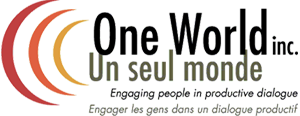Could the Way Your Meeting Space is Set Up be Affecting the Outcome?
 With meeting spaces at a premium at public, private and non-profit organizations, work teams and volunteer committees often have to make do by meeting in tight quarters. While this may be necessary for regular activities, when strategic thinking or challenging conversations are needed, it can be very important to provide a physical meeting space that will encourage participants to engage in respectful, productive conversations.
With meeting spaces at a premium at public, private and non-profit organizations, work teams and volunteer committees often have to make do by meeting in tight quarters. While this may be necessary for regular activities, when strategic thinking or challenging conversations are needed, it can be very important to provide a physical meeting space that will encourage participants to engage in respectful, productive conversations.
Studies have shown that the physical set-up impacts the outcome of a meeting. For example, a group of researchers from the American Psychological Foundation and the Swiss Federal Institute of Technology conducted a study in 2011, in which they found that natural light can help alleviate headache, fatigue, and other symptoms associated with harsh artificial light, as well as to increase alertness and productivity.
Some considerations in creating a comfortable environment that promotes effective dialogue are:
- Seating that allows participants to see one another.
- Space for people to move freely around the room, and for any small group work during the session.
- Natural lighting.
- Food and drink options that are respectful of participants’ cultures and dietary requirements (such as vegetarian options, and possibly no beef or pork), and appropriate to the time of day.
- Room on the walls to post flipchart paper.
- Support and room for audio and visual equipment, if needed.
Paying attention to meeting logistics helps facilitate the most important outcome of these meetings – productive dialogue. Such discussions lead to achievement of meeting objectives, and the opportunity for valuable face-to-face time for people to exchange ideas and network.
